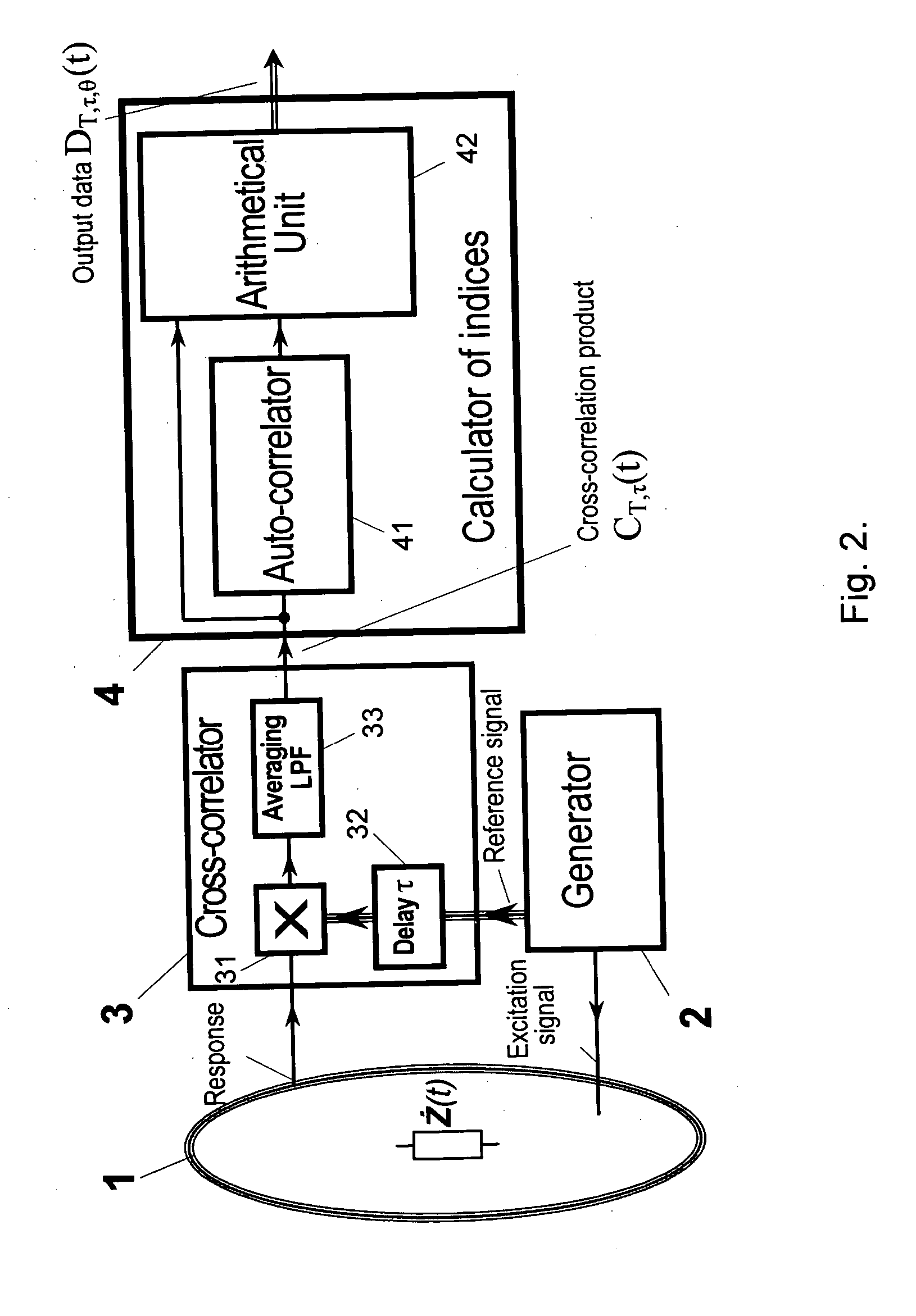Method and apparatus for determining conditions of a biological tissue
a biological tissue and condition technology, applied in the field of medical diagnostics, can solve the problems of incomplete damage to the tissue through cell destruction, misleading measurement errors, and inability to use wearable and implantable devices, and achieve the effect of preventing heart failure (heart attack)
- Summary
- Abstract
- Description
- Claims
- Application Information
AI Technical Summary
Benefits of technology
Problems solved by technology
Method used
Image
Examples
Embodiment Construction
[0038] In the following discussion, like numbers apply to like parts.
[0039] First, we refer to FIG. 1. Method according to one embodiment of the invention is based on the notion that the electric conductance of a tissue gL at low frequency fL characterizes the amount of the extracellular liquid in that tissue (see a very much simplified model of a biological living tissue in FIG. 1.). If the low frequency fL is selected sufficiently low (usually, 10 to 1000 Hz), the current does not pass the cellular membranes of the tissue as the capacitive impedance 1 / 2πfLCm, where Cm is capacitance of cell membrane, is substantially bigger than the impedance of extracellular fluid re. At that low frequency, gL=1 / re.
[0040] On the other hand, if the frequency fH is selected high enough (usually 10 kHz to 10 MHz), the capacitive impedance 1 / 2πfHCm of the cellular membrane is not substantial at that frequency (the capacitive impedance must be less than the impedance of intracellular liquid ri). The...
PUM
 Login to View More
Login to View More Abstract
Description
Claims
Application Information
 Login to View More
Login to View More - R&D
- Intellectual Property
- Life Sciences
- Materials
- Tech Scout
- Unparalleled Data Quality
- Higher Quality Content
- 60% Fewer Hallucinations
Browse by: Latest US Patents, China's latest patents, Technical Efficacy Thesaurus, Application Domain, Technology Topic, Popular Technical Reports.
© 2025 PatSnap. All rights reserved.Legal|Privacy policy|Modern Slavery Act Transparency Statement|Sitemap|About US| Contact US: help@patsnap.com



